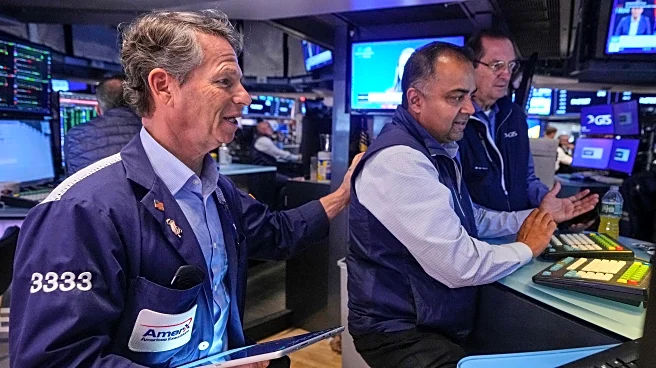What's Happening?
Goldman Sachs has highlighted a group of companies known as 'buyback aristocrats' that have consistently repurchased their own shares, outperforming the broader market. These companies have reduced their share counts by at least 1% annually over the past
decade. According to David Kostin, Goldman's chief U.S. equity strategist, an equal-weight portfolio of these companies has outperformed the S&P 500 by an annualized average of 3 percentage points since 2012. Notable companies like EPAM Systems, Apple, and AMD have announced significant buyback plans this year. Despite the popularity of buybacks, they have recently been overshadowed by capital expenditures, particularly in artificial intelligence investments. Goldman forecasts an 11% growth in cash spending by S&P 500 companies in 2026, with a significant portion allocated to capex and R&D.
Why It's Important?
The focus on buyback aristocrats underscores a strategic shift in how companies return value to shareholders. Share repurchases can signal management's confidence in a company's valuation and future performance. However, the increasing emphasis on capital expenditures, especially in AI, suggests a pivot towards long-term growth investments. This trend could impact shareholder returns and influence corporate strategies. Companies that balance buybacks with strategic investments may offer more sustainable growth, affecting investor decisions and market dynamics. The shift also reflects broader economic trends, with companies adapting to technological advancements and changing market conditions.
What's Next?
As the current blackout period for buybacks ends, more companies are expected to resume repurchasing shares, potentially boosting stock prices. This period typically sees increased buyback activity as companies aim to meet year-end goals. Investors will likely monitor how companies balance buybacks with capital investments, particularly in AI, which could shape future market performance. The ongoing economic recovery and technological investments may further influence corporate strategies and shareholder returns.














